ZIF-8 as a Drug Delivery System (DDS) for Hesperidin: Synthesis, Characterization, and In Vitro Release Profile
Abstract
1. Introduction
2. Materials and Methods
2.1. Chemicals
2.2. Methods
2.2.1. Hesperidin Solubility Assay
2.2.2. HPLC Quantification of Hesperidin
2.2.3. Synthesis of the ZIF-8 and Hesperidin-ZIF-8 System (H@ZIF-8)
Experimental Design
2.2.4. Characterization
Attenuated Total Reflection Fourier Transform Infrared (ATR-FT-IR) Spectroscopy
Thermogravimetric Analysis (TGA)
X-Ray Diffraction (XRD) Analysis
Scanning Electron Microscopy (SEM) Analysis
2.2.5. Drug Release Profile
2.2.6. Statistical Analyses
3. Results and Discussion
3.1. Hesperidin Solubility
3.2. Synthesis of the ZIF-8 and H@ZIF-8
3.3. Material Characterization
3.3.1. ATR-FT-IR Spectroscopy
3.3.2. Thermal Stability
3.3.3. X-Ray Diffraction (XRD) Analysis
3.3.4. Scanning Electron Microscopy (SEM) Analysis
3.4. Drug Release Profile
4. Conclusions
Author Contributions
Funding
Institutional Review Board Statement
Informed Consent Statement
Data Availability Statement
Acknowledgments
Conflicts of Interest
Abbreviations
| 2-MIm | 2-Methylimidazole |
| ATR-FT-IR | Attenuated Total Reflectance Fourier Transform Infrared |
| DDS | Drug Delivery System |
| DMSO | Dimethyl Sulfoxide |
| H@ZIF-8 | Hesperidin-ZIF-8 System |
| HPLC | High-Performance Liquid Chromatography |
| MOF | Metal–Organic Framework |
| SEM | Scanning Electron Microscopy |
| TGA | Thermogravimetric Analysis |
| XRD | X-Ray Diffraction |
| ZIF-8 | Zeolitic Imidazolate Framework |
References
- Savjani, K.T.; Gajjar, A.K.; Savjani, J.K. Drug Solubility: Importance and Enhancement Techniques. ISRN Pharm. 2012, 2012, 195727. [Google Scholar] [CrossRef]
- Allen, L.V., Jr.; Popovich, N.G.; Ansel, H.C. Formas Farmacêuticas e Sistema de Liberação de Fármacos, 9th ed.; Artmed: Porto Alegre, Brazil, 2013; ISBN 978-85-65852-84-5. [Google Scholar]
- Aulton, M.E.; Taylor, K.M.G. Aulton Delineamento de Formas Farmacêuticas, 4th ed.; Elsevier: Rio de Janeiro, Brazil, 2016; ISBN 978-85-352-8316-7. [Google Scholar]
- Coimbra, M.; Isacchi, B.; Van Bloois, L.; Torano, J.S.; Ket, A.; Wu, X.; Broere, F.; Metselaar, J.M.; Rijcken, C.J.F.; Storm, G.; et al. Improving Solubility and Chemical Stability of Natural Compounds for Medicinal Use by Incorporation into Liposomes. Int. J. Pharm. 2011, 416, 433–442. [Google Scholar] [CrossRef]
- Williams, H.D.; Trevaskis, N.L.; Charman, S.A.; Shanker, R.M.; Charman, W.N.; Pouton, C.W.; Porter, C.J.H. Strategies to Address Low Drug Solubility in Discovery and Development. Pharmacol. Rev. 2013, 65, 315–499. [Google Scholar] [CrossRef]
- Huxford, R.C.; Della Rocca, J.; Lin, W. Metal–Organic Frameworks as Potential Drug Carriers. Curr. Opin. Chem. Biol. 2010, 14, 262–268. [Google Scholar] [CrossRef]
- Howarth, A.J.; Liu, Y.; Li, P.; Li, Z.; Wang, T.C.; Hupp, J.T.; Farha, O.K. Chemical, Thermal and Mechanical Stabilities of Metal–Organic Frameworks. Nat. Rev. Mater. 2016, 1, 15018. [Google Scholar] [CrossRef]
- Sun, C.-Y.; Qin, C.; Wang, X.-L.; Su, Z.-M. Metal-Organic Frameworks as Potential Drug Delivery Systems. Expert. Opin. Drug Deliv. 2013, 10, 89–101. [Google Scholar] [CrossRef]
- Venna, S.R.; Jasinski, J.B.; Carreon, M.A. Structural Evolution of Zeolitic Imidazolate Framework-8. J. Am. Chem. Soc. 2010, 132, 18030–18033. [Google Scholar] [CrossRef] [PubMed]
- Hoop, M.; Walde, C.F.; Riccò, R.; Mushtaq, F.; Terzopoulou, A.; Chen, X.-Z.; deMello, A.J.; Doonan, C.J.; Falcaro, P.; Nelson, B.J.; et al. Biocompatibility Characteristics of the Metal Organic Framework ZIF-8 for Therapeutical Applications. Appl. Mater. Today 2018, 11, 13–21. [Google Scholar] [CrossRef]
- Cao, R.; Zhao, Y.; Zhou, Z.; Zhao, X. Enhancement of the Water Solubility and Antioxidant Activity of Hesperidin by Chitooligosaccharide. J. Sci. Food Agric. 2018, 98, 2422–2427. [Google Scholar] [CrossRef]
- Alam, A.; Jawaid, T.; Alsanad, S.M.; Kamal, M.; Rawat, P.; Singh, V.; Alam, P.; Alam, P. Solubility Enhancement, Formulation Development, and Antibacterial Activity of Xanthan-Gum-Stabilized Colloidal Gold Nanogel of Hesperidin against Proteus Vulgaris. Gels 2022, 8, 655. [Google Scholar] [CrossRef]
- Paczkowska-Walendowska, M.; Miklaszewski, A.; Cielecka-Piontek, J. Improving Solubility and Permeability of Hesperidin through Electrospun Orange-Peel-Extract-Loaded Nanofibers. Int. J. Mol. Sci. 2023, 24, 7963. [Google Scholar] [CrossRef]
- Shekaari, H.; Zafarani-Moattar, M.T.; Mokhtarpour, M.; Faraji, S. Solubility of Hesperidin Drug in Aqueous Biodegradable Acidic Choline Chloride-Based Deep Eutectic Solvents. Sci. Rep. 2023, 13, 11276. [Google Scholar] [CrossRef]
- Yang, J.; Wang, Y.; Gao, Y.; Wang, Z.; Yin, C.; Ding, X.; Yang, E.; Sun, D.; Wang, W.; Guo, F. Efficient Sterilization System Combining Flavonoids and Hyaluronic Acid with Metal Organic Frameworks as Carrier. J. Biomed. Mater. Res. 2022, 110, 1887–1898. [Google Scholar] [CrossRef]
- Majumdar, S.; Srirangam, R. Solubility, Stability, Physicochemical Characteristics and in Vitro Ocular Tissue Permeability of Hesperidin: A Natural Bioflavonoid. Pharm. Res. 2009, 26, 1217–1225. [Google Scholar] [CrossRef]
- Kaur, H.; Mohanta, G.C.; Gupta, V.; Kukkar, D.; Tyagi, S. Synthesis and Characterization of ZIF-8 Nanoparticles for Controlled Release of 6-Mercaptopurine Drug. J. Drug Deliv. Sci. Technol. 2017, 41, 106–112. [Google Scholar] [CrossRef]
- Tiwari, A.; Singh, A.; Garg, N.; Randhawa, J.K. Curcumin Encapsulated Zeolitic Imidazolate Frameworks as Stimuli Responsive Drug Delivery System and Their Interaction with Biomimetic Environment. Sci. Rep. 2017, 7, 12598. [Google Scholar] [CrossRef]
- Storpirtis, S.; Gonçalves, J.E.; Chiann, C.; Gai, M.N. Ciências Farmacêuticas: Biofarmacotécnica, 1st ed.; Guanabara Koogan Ltda.: Rio de Janeiro, Brazil, 2009; ISBN 978-85-277-1587-4. [Google Scholar]
- Guedes, N.M.; Silva, J.G.; Mesquita, L.L.G.D.M.; Castro, W.V.D.; Lima, E.D.S.P.; Santana, D.P.D.; Bedor, D.C.G. Review of the Dissolution Tests in the Brazilian Pharmacopeia. Braz. J. Pharm. Sci. 2024, 60, e23633. [Google Scholar] [CrossRef]
- Anwer, M.K.; Al-Shdefat, R.; Jamil, S.; Alam, P.; Abdel-Kader, M.S.; Shakeel, F. Solubility of Bioactive Compound Hesperidin in Six Pure Solvents at (298.15 to 333.15) K. J. Chem. Eng. Data 2014, 59, 2065–2069. [Google Scholar] [CrossRef]
- Guo, H.; Liu, L.; Hu, Q.; Dou, H. Mixed Solvent Method for Improving the Size Uniformity and Cargo-Loading Efficiency of ZIF-8 Nanoparticles. Langmuir 2021, 37, 10089–10099. [Google Scholar] [CrossRef] [PubMed]
- Jian, M.; Liu, B.; Liu, R.; Qu, J.; Wang, H.; Zhang, X. Water-Based Synthesis of Zeolitic Imidazolate Framework-8 with High Morphology Level at Room Temperature. RSC Adv. 2015, 5, 48433–48441. [Google Scholar] [CrossRef]
- Feng, X.; Wu, T.; Carreon, M.A. Synthesis of ZIF-67 and ZIF-8 Crystals Using DMSO (Dimethyl Sulfoxide) as Solvent and Kinetic Transformation Studies. J. Cryst. Growth 2016, 455, 152–156. [Google Scholar] [CrossRef]
- Amorim, A.F.V.D.; Siqueira, S.M.C.; Ricardo, N.M.P.S.; Almeida Neto, F.W.D.Q.; Souza, C.A.G.D.; Costa, K.B.S.; Cunha, A.P.; Almeida, R.R.D.; Saraiva, G.D.; Marinho, E.S.; et al. Microencapsulation of Hesperidin with Galactomannan Biopolymer: Structural, Vibrational and Thermal Analysis. Mater. Lett. 2024, 357, 135784. [Google Scholar] [CrossRef]
- Pan, Y.; Liu, Y.; Zeng, G.; Zhao, L.; Lai, Z. Rapid Synthesis of Zeolitic Imidazolate Framework-8 (ZIF-8) Nanocrystals in an Aqueous System. Chem. Commun. 2011, 47, 2071. [Google Scholar] [CrossRef]
- Zhao, X.; Fang, X.; Wu, B.; Zheng, L.; Zheng, N. Facile Synthesis of Size-Tunable ZIF-8 Nanocrystals Using Reverse Micelles as Nanoreactors. Sci. China Chem. 2014, 57, 141–146. [Google Scholar] [CrossRef]
- Shi, Z.; Yu, Y.; Fu, C.; Wang, L.; Li, X. Water-Based Synthesis of Zeolitic Imidazolate Framework-8 for CO2 Capture. RSC Adv. 2017, 7, 29227–29232. [Google Scholar] [CrossRef]
- Wei, Q.; Keck, C.M.; Müller, R.H. Oral Hesperidin-Amorphization and Improved Dissolution Properties by Controlled Loading onto Porous Silica. Int. J. Pharm. 2017, 518, 253–263. [Google Scholar] [CrossRef]
- Inoue, T.; Yoshinaga, A.; Takabe, K.; Yoshioka, T.; Ogawa, K.; Sakamoto, M.; Azuma, J.; Honda, Y. In Situ Detection and Identification of Hesperidin Crystals in Satsuma Mandarin (Citrus unshiu) Peel Cells. Phytochem. Anal. 2015, 26, 105–110. [Google Scholar] [CrossRef]
- ANVISA RDC 31/2010-Provides for Pharmaceutical Equivalence and Comparative Dissolution Profile Studies. 2010. Available online: https://anvisalegis.datalegis.net/action/ActionDatalegis.php?acao=abrirTextoAto&tipo=RDC&numeroAto=00000031&seqAto=000&valorAno=2010&orgao=RDC/DC/ANVISA/MS&codTipo=&desItem=&desItemFim=&cod_menu=1696&cod_modulo=134&pesquisa=true (accessed on 8 September 2025).
- Li, H.-F.; Zhang, D.; Qu, W.-J.; Wang, H.-L.; Liu, Y.; Borjigdai, A.; Cui, J.; Dong, Z.-Q. Biopharmaceutics classification and absorption mechanisms primary study on four kinds of flavonoids. Zhongguo Zhong Yao Za Zhi 2016, 41, 1198–1203. [Google Scholar] [CrossRef] [PubMed]
- Sun, D.D.; Wen, H.; Taylor, L.S. Non-Sink Dissolution Conditions for Predicting Product Quality and In Vivo Performance of Supersaturating Drug Delivery Systems. J. Pharm. Sci. 2016, 105, 2477–2488. [Google Scholar] [CrossRef]
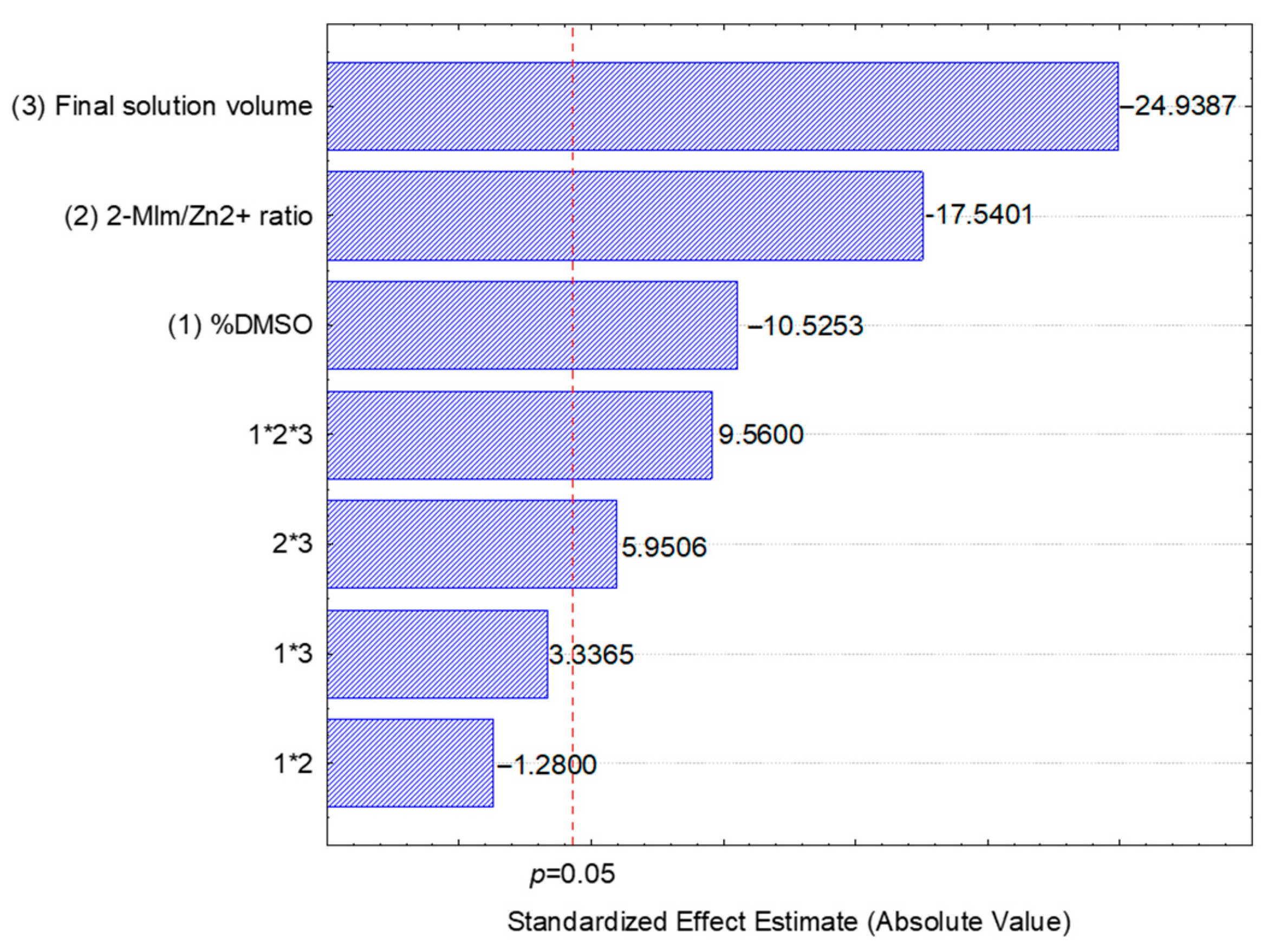
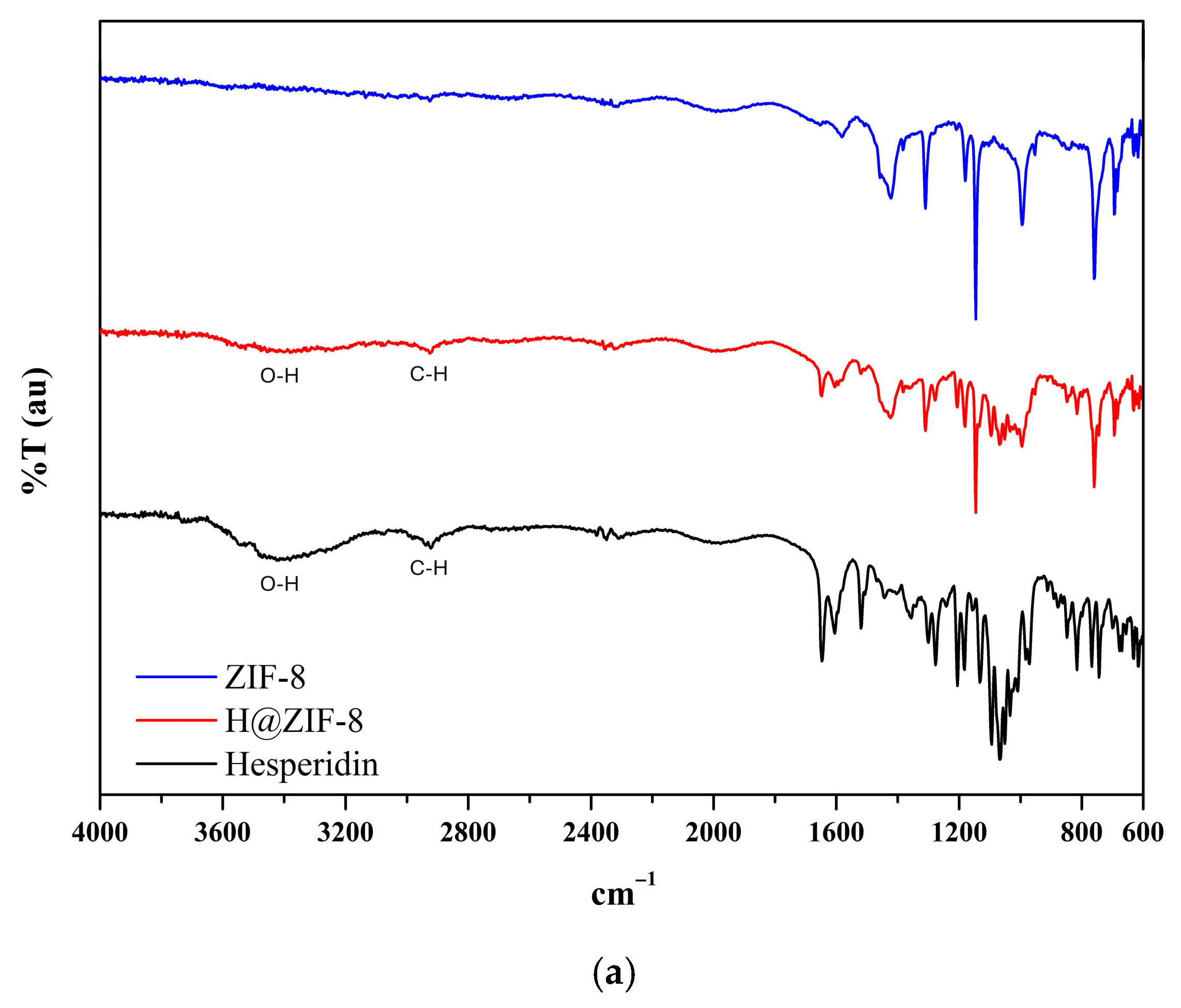
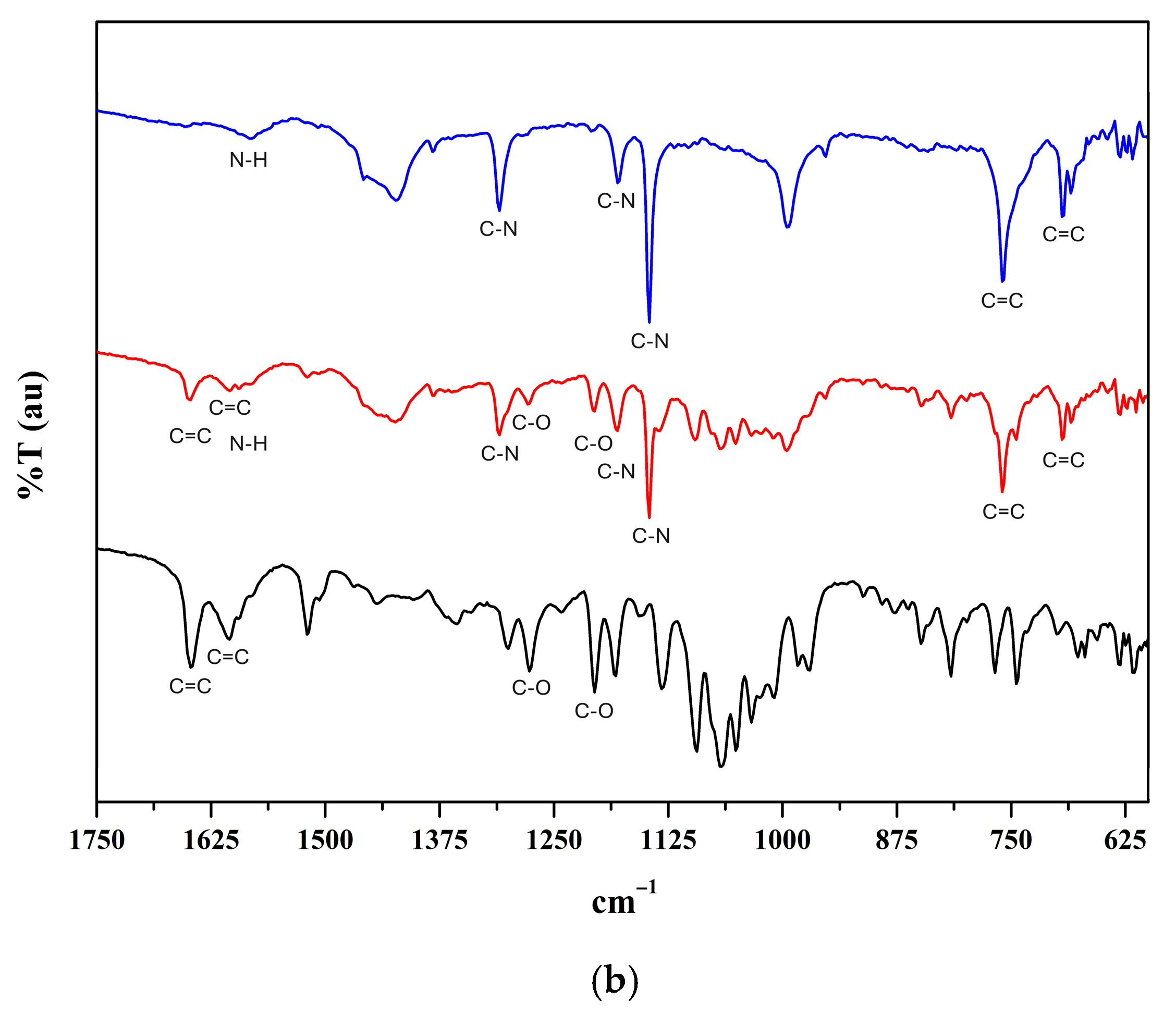
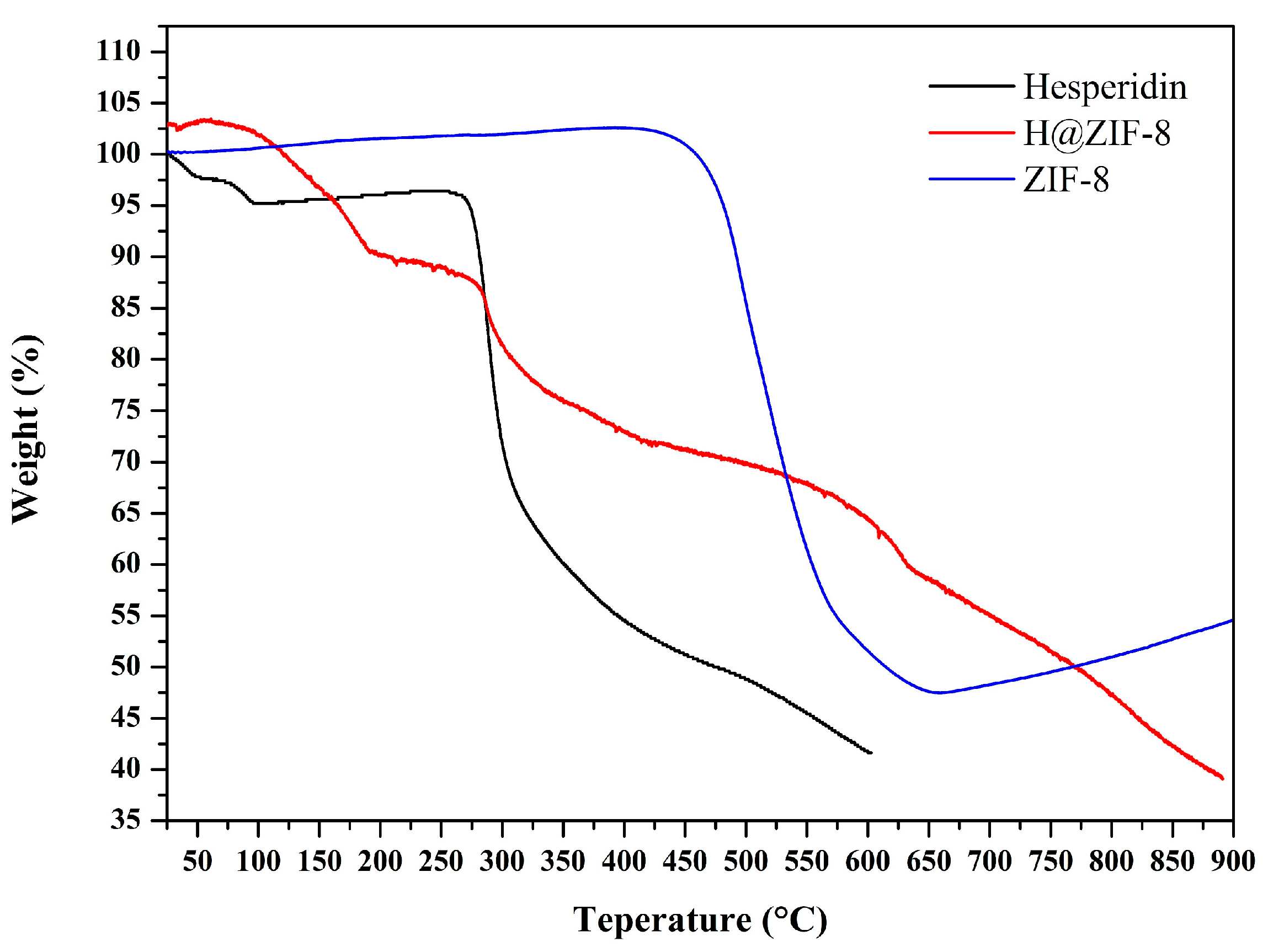


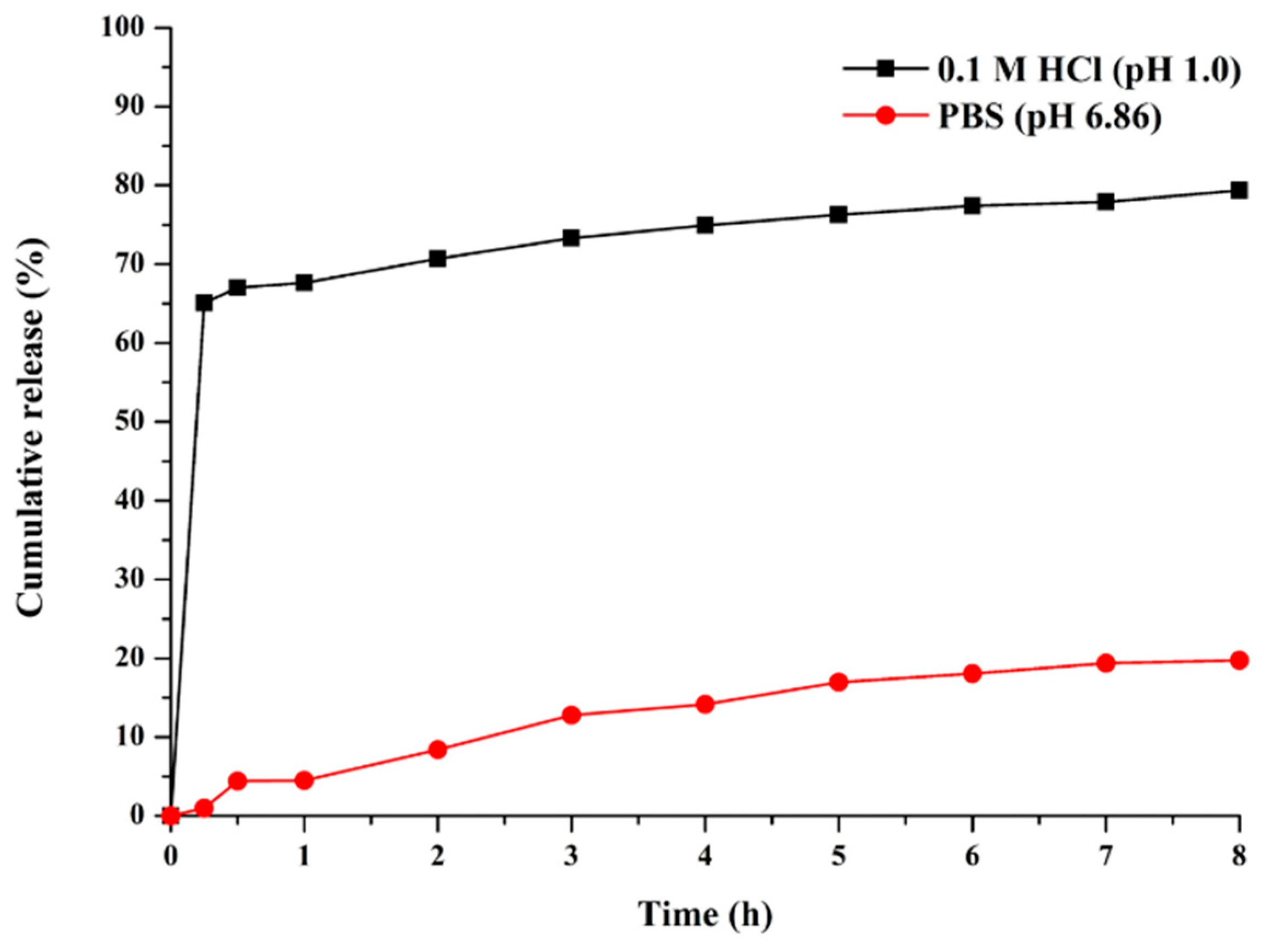
| Independent Variable | Low Level (−1) | Center Point (0) | High Level (+1) |
|---|---|---|---|
| % DMSO (v/v) | 12 | 18 | 24 |
| 2-MIm/Zn2+ ratio | 60 | 90 | 120 |
| Final solution volume (mL) | 20 | 30 | 40 |
| Assay Number | %DMSO | 2-MIm/Zn2+ Ratio | Final Solution Volume |
|---|---|---|---|
| 1 | −1 | −1 | −1 |
| 2 | +1 | −1 | −1 |
| 3 | −1 | +1 | −1 |
| 4 | +1 | +1 | −1 |
| 5 | −1 | −1 | +1 |
| 6 | +1 | −1 | +1 |
| 7 | −1 | +1 | +1 |
| 8 | +1 | +1 | +1 |
| 9 | 0 | 0 | 0 |
| 10 | 0 | 0 | 0 |
| 11 | 0 | 0 | 0 |
| Method Employed | Solubility in µg∙mL−1 (Mean ± SD) | Reference |
|---|---|---|
| Shake flask | 4.93 ± 0.99 µg∙mL−1 | [16] |
| Shake flask | 4.98 * | [21] |
| Vortex | 5.56 ** | [11] |
| Assay Number | %DMSO | 2-MIm/Zn2+ Ratio | Final Solution Volume | Drug Loading (%) |
|---|---|---|---|---|
| 1 | −1 | −1 | −1 | 40.03 |
| 2 | +1 | −1 | −1 | 37.51 |
| 3 | −1 | +1 | −1 | 29.48 |
| 4 | +1 | +1 | −1 | 8.88 |
| 5 | −1 | −1 | +1 | 19.46 |
| 6 | +1 | −1 | +1 | 6.56 |
| 7 | −1 | +1 | +1 | 2.89 |
| 8 | +1 | +1 | +1 | 3.80 |
| 9 | 0 | 0 | 0 | 1.73 |
| 10 | 0 | 0 | 0 | 3.97 |
| 11 | 0 | 0 | 0 | 2.21 |
Disclaimer/Publisher’s Note: The statements, opinions and data contained in all publications are solely those of the individual author(s) and contributor(s) and not of MDPI and/or the editor(s). MDPI and/or the editor(s) disclaim responsibility for any injury to people or property resulting from any ideas, methods, instructions or products referred to in the content. |
© 2025 by the authors. Licensee MDPI, Basel, Switzerland. This article is an open access article distributed under the terms and conditions of the Creative Commons Attribution (CC BY) license (https://creativecommons.org/licenses/by/4.0/).
Share and Cite
Sá, P.; Souza, N.; Sampaio, P.; Silva, J.; Rolim, L. ZIF-8 as a Drug Delivery System (DDS) for Hesperidin: Synthesis, Characterization, and In Vitro Release Profile. Ceramics 2025, 8, 113. https://doi.org/10.3390/ceramics8030113
Sá P, Souza N, Sampaio P, Silva J, Rolim L. ZIF-8 as a Drug Delivery System (DDS) for Hesperidin: Synthesis, Characterization, and In Vitro Release Profile. Ceramics. 2025; 8(3):113. https://doi.org/10.3390/ceramics8030113
Chicago/Turabian StyleSá, Pedro, Nathália Souza, Pedrita Sampaio, James Silva, and Larissa Rolim. 2025. "ZIF-8 as a Drug Delivery System (DDS) for Hesperidin: Synthesis, Characterization, and In Vitro Release Profile" Ceramics 8, no. 3: 113. https://doi.org/10.3390/ceramics8030113
APA StyleSá, P., Souza, N., Sampaio, P., Silva, J., & Rolim, L. (2025). ZIF-8 as a Drug Delivery System (DDS) for Hesperidin: Synthesis, Characterization, and In Vitro Release Profile. Ceramics, 8(3), 113. https://doi.org/10.3390/ceramics8030113







